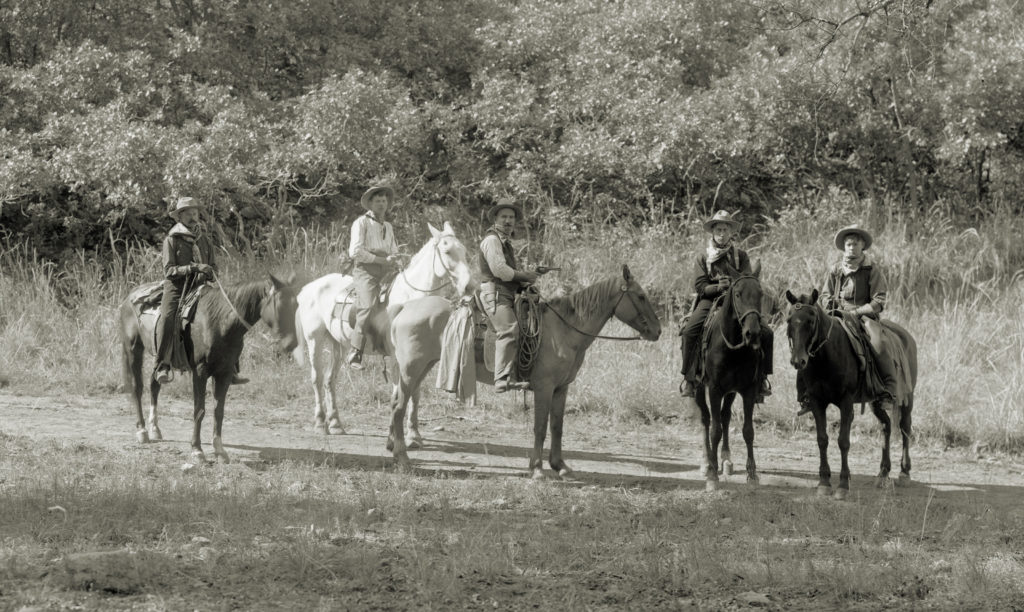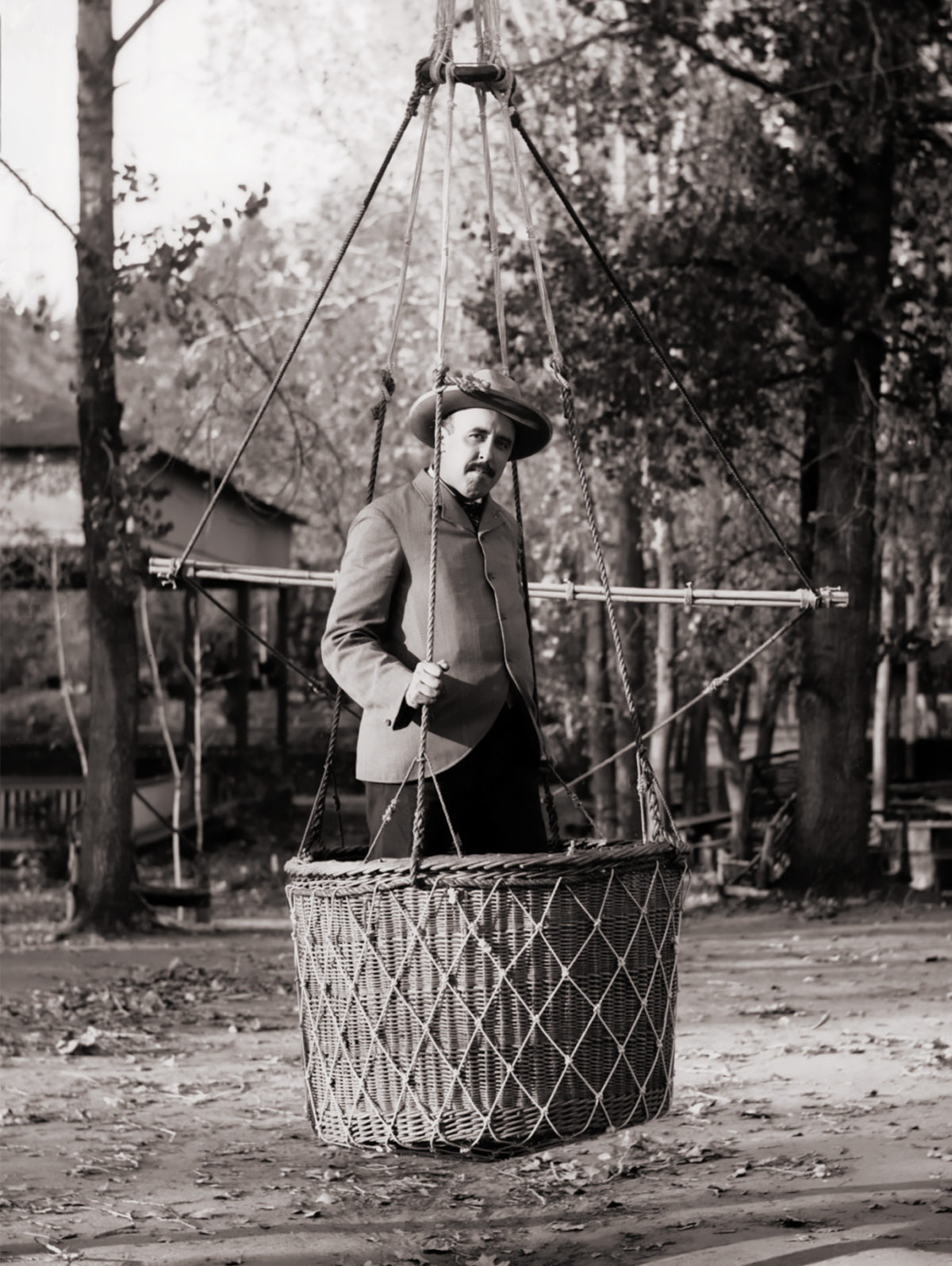On Oct. 9, 1904, amid production on the film The Hold Up of the Leadville Stage (or Robbery of the Leadville Stage), a real shootout occurred. The crew and some two dozen cast members were filming the climactic holdup scene in the foothills of Colorado Springs, Colo., when a wagonload of Eastern tourists happened on the location. Hearing gunshots and witnessing a man falling to the ground, armed men among the tourists opened fire on the make-believe highwaymen, wounding film executive William Selig in the arm. Meanwhile, the director rushed toward the dudes, waving his arms and beseeching them to cease fire. By the time the Easterners holstered their six-shooters, they’d fired nearly a dozen rounds. Fortunately for cast and crew, the trigger-happy tourists proved pitiable shots, otherwise the affray might have resulted in all-too-real bullet-ridden bodies.
The director who came to the rescue was Harry H. Buckwalter. Realizing Americans had long been captivated with the lore and legends of the Old West, he was among the first to film what have since been branded Westerns. A photojournalist turned filmmaker, Buckwalter teamed up with William Selig, owner of Selig Polyscope Co., around the turn of the 20th century. Over the next decade the pair produced assorted rudimentary, histrionic narratives for rapt theatergoers. Buckwalter served as producer, director and cameraman, while Selig distributed the films. Though Buckwalter’s production career was brief, it was prolific. Between 1901 and 1913 he completed nearly 50 Western-themed films, some simple scenic panoramas, others action narratives with unpolished plots.
Born in Reading, Pa., on Nov. 1, 1867, Harry Hale Buckwalter first ventured West at age 16. Colorado’s striking vistas prompted an interest in photojournalism, leading him in turn to The Denver Republican and the Rocky Mountain News. As a photographer and roving reporter for the latter, he was soon making headlines. To highlight Buckwalter’s stories, staff artists initially reproduced his photos as wood block-illustrations.
Buckwalter was fearless. On Aug. 12, 1894, having enlisted local balloonist Ivy Baldwin, he prepared to shoot a series of aerial photographs of Denver and environs. When the weight of both men proved too much for the balloon to lift, Buckwalter made the ascent solo from Elitch Gardens. The resulting article, “Dancing in the Air,” featured his sweeping landscapes—early Western photojournalism at its best.
By 1900 Buckwalter had left the Rocky Mountain News to pursue a career as a freelance photographer. He soon found himself working on the railroads, notably the Colorado Midland (CM), taking promotional photographs of trackside scenery. That lucrative work stirred his interest in capturing objects in motion, and he experimented with various high-speed shutters. The sideline paid off, as New York–based Prosch Manufacturing Co., which made early photographic equipment, paid $100 for an enhanced shutter developed by Buckwalter. With his newly honed skill he was soon capturing still images of moving trains, rodeos and other action subjects. It was a short hop from there to motion pictures. For the well-paying CM Buckwalter filmed “travelogues,” early documentaries of spectacular Western routes.
By 1902 Buckwalter had a number of travelogues under his belt. With those he began his association with Selig, suppling the enterprising motion picture executive with 19 short films for Polyscope’s 1902 catalog. With runtimes between 1 and 3 ½ minutes, “shorts” was certainly an apt label. There were no plots, just uninterrupted action. Such travelogues as Panoramic View of Hell Gate and Panorama of Ute Pass brought the CM passengers and Buckwalter interested clients.
At least one of Buckwalter’s shorts never made it to the screen. In the spring of 1905, on invitation, he was filming President Theodore Roosevelt and party returning from a hunt in Glenwood Springs, Colo., when Gertrude Buell Dunn, a local correspondent for a Denver newspaper, rode up and “photobombed” the president. The attractive young woman was not only riding astride but also dressed in rather risqué fashion with rolled-up sleeves and ankles showing beneath her skirts. An incensed Roosevelt had administration officials confiscate Buckwalter’s reel and hundreds of snapshots taken by local residents, though The Denver Times managed to skirt the ban and publish a photo of Dunn.

Buckwalter was ever the innovator. For his part in a 1906 advertising blitz for the Santa Fe Railroad and city of Albuquerque the filmmaker placed his camera on the front of a trolley car that was to run the length of Railroad Street (present-day Central Avenue). To ensure he would capture sufficiently interesting action, Buckwalter pitched a story for the September 2 edition of The Albuquerque Morning Journal, asking “every man woman and child” to show up on Railroad Street at 11:30 the next morning “to show the rest of the United States what a real crowd looks like.” The chance at “stardom” brought the crowds, and Buckwalter’s resulting travelogue, Albuquerque, New Mexico, City Tour, captured the business district at its busy best.
Not all of Buckwalter’s films lacked a plot. Among his earliest was the 4-minute 1902 short The Girls in the Overalls, which dramatized a true story about the orphaned son and seven daughters of Gunnison, Colo., rancher Regis Vidal and wife Albine. When their parents died, the siblings worked to keep the ranch going. The film, which captures the Vidal orphans at work and play, brought them public attention and offers of help. More action-packed Buckwalter titles included the aforementioned Hold Up of the Leadville Stage and Tracked by Bloodhounds; or, A Lynching at Cripple Creek (1904).
Buckwalter’s swan song in the film business was a documentary on the final phase of construction of the Panama Canal. Once out of motion pictures, he transformed himself into a pioneering radio broadcaster. Harry Buckwalter took his own final bow at age 62 on March 7, 1930. Soon after his death, wife Carrie Emmajean Fuller donated his collection of glass plate negatives to the since closed Colorado History Museum. Today almost all his films are lost to time, though Tracked by Bloodhounds is viewable on YouTube.






